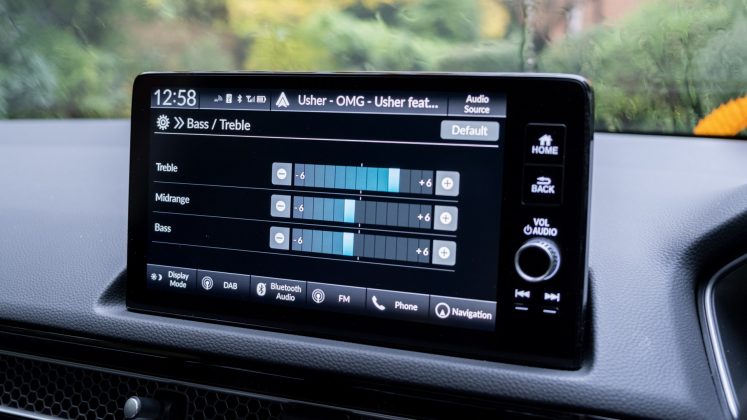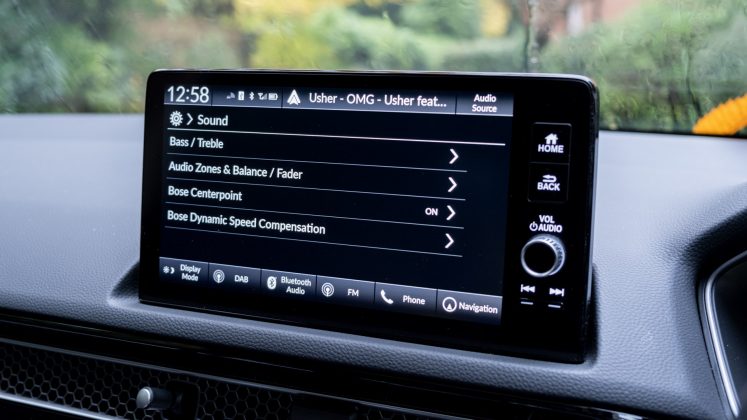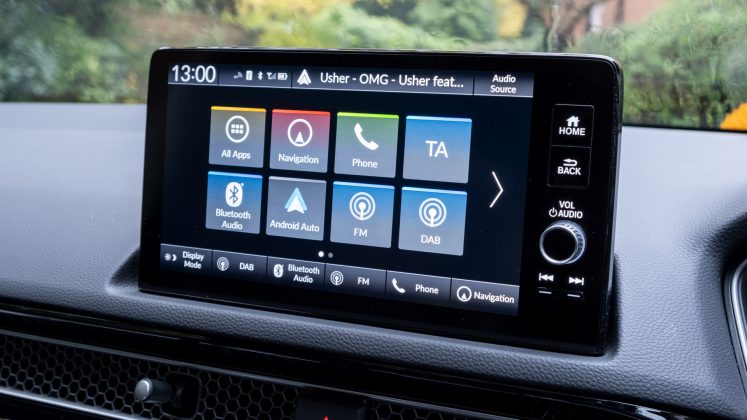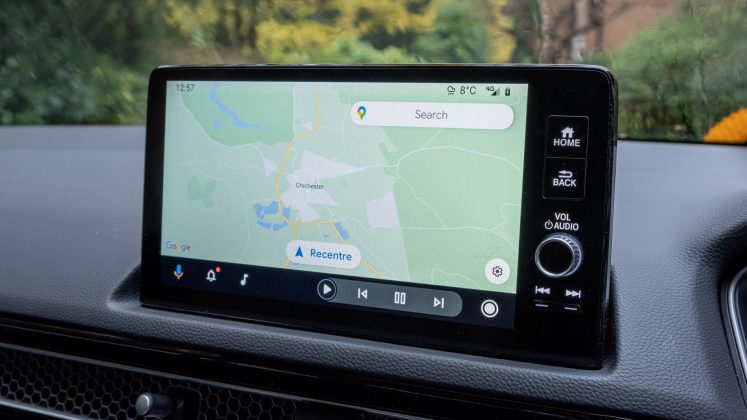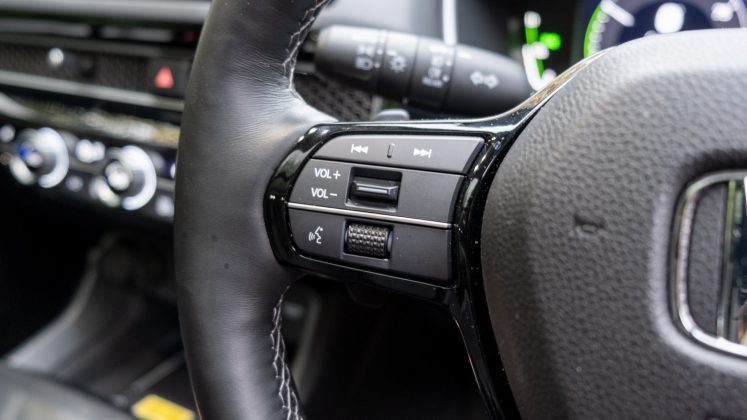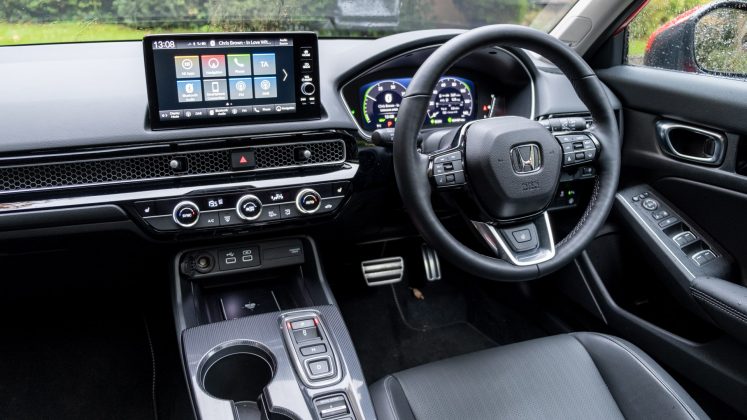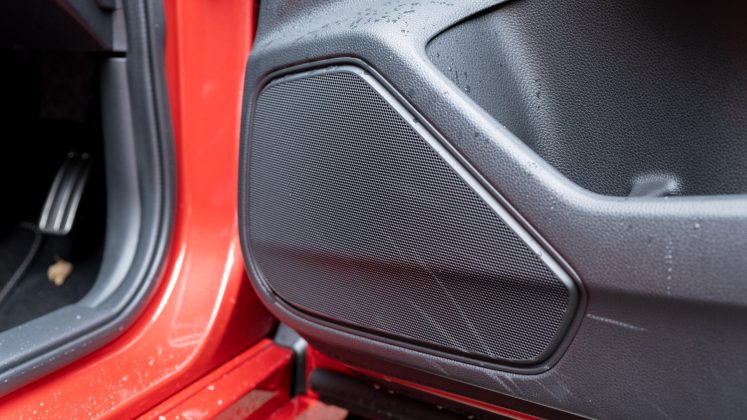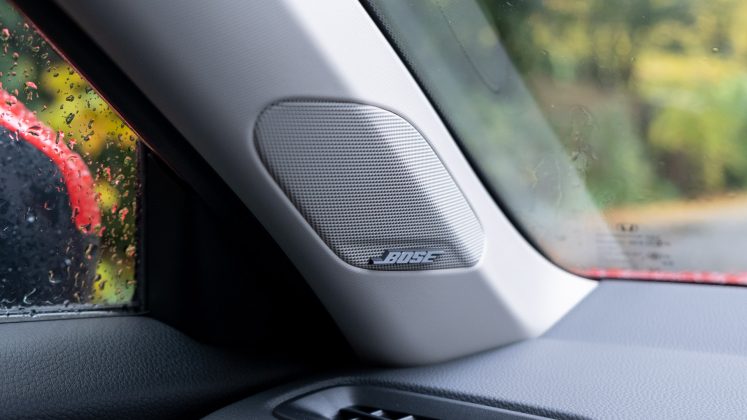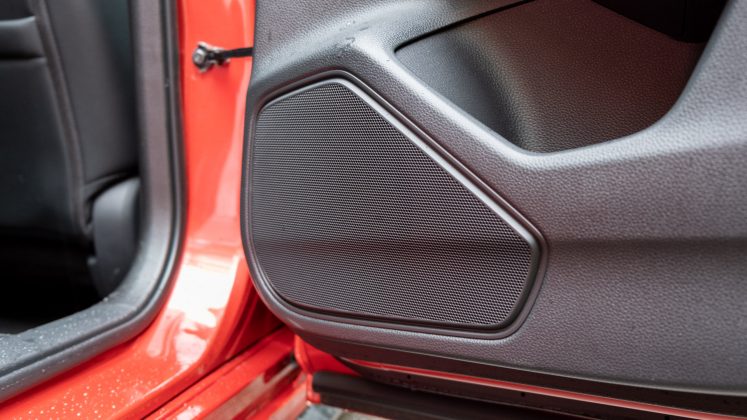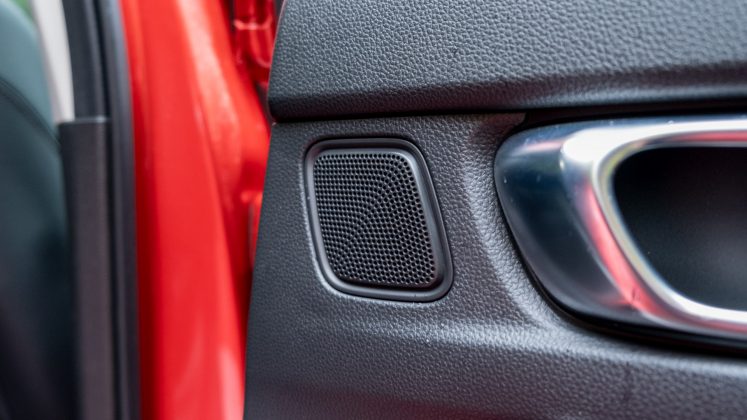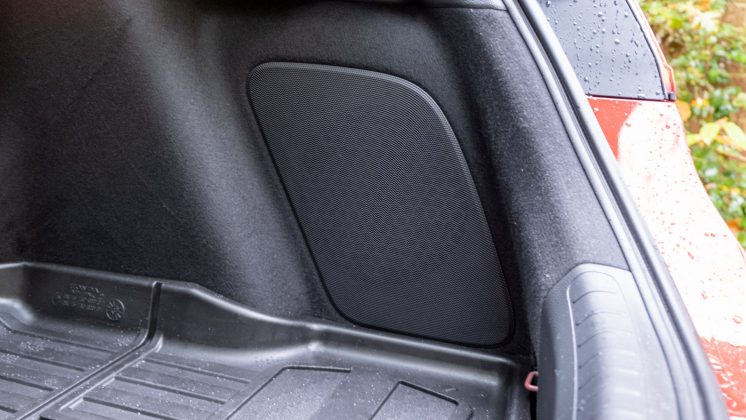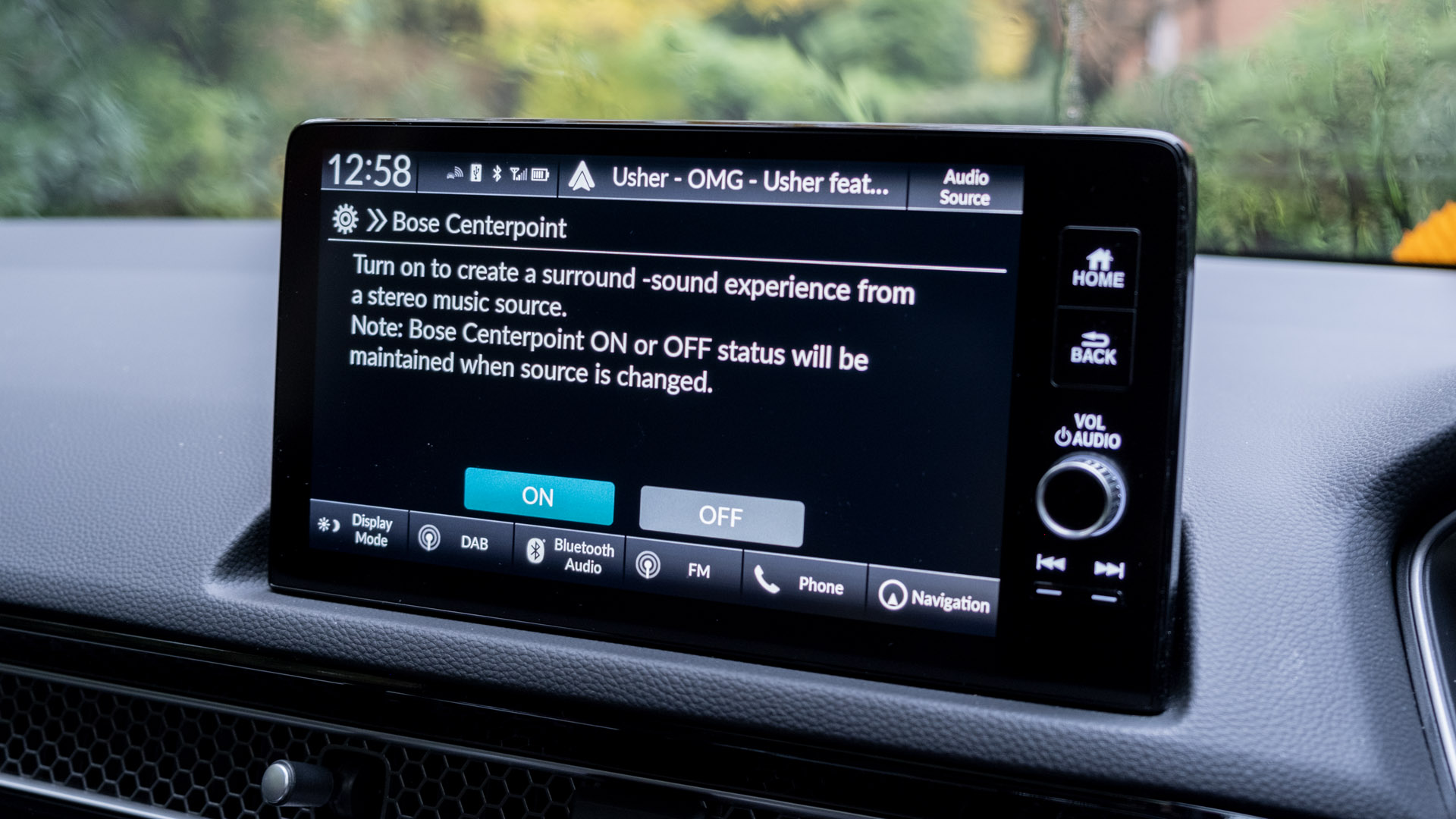Now in its eleventh generation, the Honda Civic is now solely offered as a part-electrified hatchback with the automaker’s unique e:HEV technology. We found it to be a stylish, practical, fuel-efficient vehicle with excellent driving dynamics – it attained our Best Buy award, where we’d go as far as saying that it’s the best hybrid vehicle on the market that doesn’t require to be plugged in.
In terms of its audio configuration, the Civic houses an eight-speaker system in the Elegance and Sport trims, while the top-spec Advance trim that we have on review features a 12-speaker Bose system.
Click here to read the full Honda Civic review
Honda Civic audio setup
To tinker with the vehicle’s audio settings, you’ll have to navigate to the appropriate menu on the 9″ infotainment system – here are our optimal settings:
- Treble: +3
- Midrange: -1
- Bass: -1
- Balance & Fader: Centre
- Bose Centerpoint: On
In order to connect to the vehicle’s system, Apple CarPlay and Android Auto are both supported over a wired connection. The former system is also supported over a wireless connection. At the time of writing, however, Android Auto is only officially supported over a wired connection but can unofficially work without a cable; leading us to believe a future firmware update will open up connectivity options for Android users. Of course, Bluetooth is also an option with the SBC and AAC codecs supported – for the utmost sound quality, we’d always suggest plugging in your smartphone.
Moving onto media controls, they can be accessed through the 9″ display, via the volume and media controls found just beside the screen and through physical buttons located on the steering wheel.
Read next: Honda HR-V audio review: Upgrade to the Advance Style trim?
Honda Civic audio performance
For a demo of the Honda Civic’s audio system head on over to our YouTube channel.
In terms of its audio configuration, the Elegance and Sport trims house four speakers at the front of the cabin and four at the rear. There’s a 17cm full-range driver within each of the front doors and tweeters within the A-pillars. At the rear, there’s a 13cm full-range driver and a tweeter within each of the doors. The Advance trim adds an 8cm midrange centre speaker within the dashboard, and two identical drivers within the rear parcel shelf. There’s also a subwoofer in the boot, which takes up 5 litres of space and processing done by audio specialists, Bose.
The inclusion of a subwoofer in the Bose system certainly bolsters the vehicle’s sub-bass response. Indeed, songs that have a pronounced low-end rumble come to life with the 5-litre speaker; while, it’s not quite up there with more premium systems that offer an even better lower-end extension, it’s still a fantastic inclusion given the vehicle’s asking price and competitors’ offerings.
As for the mid-bass tones, they’re punchy. In ‘Special’ by Tuxedo the bass slams are pronounced and controlled. We found that decreasing the ‘Bass’ EQ by one notch resulted in the best sonic reproduction; in its default state the lows are a touch overpowering.
Read next: The best dash cams to mount inside your vehicle
However, the system’s pronounced low-end prowess does have an effect on the mid-range tones, namely the lower mids, which sound pushed back and recessed. Now, one might be tempted to ramp up the midrange EQ through the infotainment system, but doing so will affect accuracy; in fact, even in its default configuration, it sounds a little off and thus led us to take one notch off in order to better the system’s performance across the frequency range. Still, the speakers dotted around the cabin do a competent job of reproducing a lively upper-mid-range response, which will provide most consumers with enough excitement.
Speaking of which, it’s great that the Japanese automaker has integrated tweeters at the front and rear of the cabin. This means that everyone within the cabin can enjoy a lively top-end extension. Adding three notches to the Treble EQ brings the most out of the system, adding a bit of extra zing at the top end.
Moving onto its soundstage reproduction, it’s a double-edged sword. On one hand, with the Bose Centerpoint option enabled, the system has a good sense of width, depth and instrument separation, but does suffer from a little bit of reverb. Songs such as ‘Green Light’ by John Legend really portray this phenomenon. Of course, with the option disabled you will attain a more accurate audio reproduction but suffer from uni-directional sound. Ultimately, audiophiles will notice odd nuances when listening back to their favourite tracks but will equally appreciate Bose’s software implementation which provides for a more engaging listening experience.
Finally, onto cabin noise, the Civic e:HEV isn’t the most insulated vehicle on the market, as its 2-litre engine can be heard ticking away at the front of the vehicle. Using a sound meter, we recorded 43-45 dBA at a standstill; driving at 20mph, 58-61 dBA; driving at 30-40mph, 68-72 dBA; and at 70mph, 72-75 dBA. Indeed, at lower speeds, it’s no match for the serene driving experience that one can attain in the likes of the Citroen C5 X, but at higher speeds, it’s on par with a lot of its rivals.
Read next: Skoda Octavia iV Estate audio review: Worth upgrading to the Canton system?
TotallyEV’s verdict on the Honda Civic’s audio system
While the Honda Civic’s 12-speaker Bose system is in no way perfect nor can it compete with more premium offerings, it’s still an excellent performer across the frequency range, especially for a vehicle of its price tag. Indeed, the Advance trim provides an upgrade over the Elegance and Sport trims by bolstering the sub-bass and mid-range tones, while also providing a more expansive soundstage. As a result, it receives our Performance award.
Find the best Honda Civic deals
Would you opt for the Advance trim for the upgraded speaker system alone? Let us know in the comments section below or via social media; we’re on: YouTube, Instagram, Facebook, Twitter and LinkedIn.

